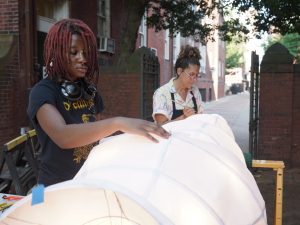
FEATURED IMAGE: Divine Porter and George Ferrandi working at The Anderson. Image by John Freyer.
Over the summer, VCUarts Sculpture student Leo Connors (Sculpture, Class of ‘26) and recent alum Divine Porter (Sculpture BFA ‘24) worked as collaborative assistants for artist George Ferrandi (Sculpture BFA ‘93). A large team of collaborators, which included many VCUarts students and recent graduates, worked with Ferrandi at 1708 Gallery and The Anderson to create Iota Cephei, a large-scale illuminated sculpture and part of Ferrandi’s Jump!Star initiative. In this interview, two of The Anderson’s Gallery Assistants, Kendall Harley (Art History Class of ‘28) and Adara Edwards (Psychology, Class of ‘28) pose questions to Leo and Divine about their experience working with Ferrandi.
This sculpture is on view in Big Top Energy: Schemes & Souvenirs at The Anderson through October 14th, 2025 and is one of eleven of Ferrandi’s Future North Star sculptures using the Japanese Nebuta process to construct lightweight illuminated parade floats with wood, wire, and masa paper. At the end of the exhibition, the community will process the sculpture to Abner Clay Park for 1708 Gallery’s InLight 2025: Super!Giant!Jump!Star. The outdoor, illuminated art exhibition will feature the eleven Future North Star sculptures activated by 100 community members as the next step in developing rituals for future generations. Read more about the collaborative process that brought these sculptures into being.
You worked on a new Future North Star sculpture with George Ferrandi over the summer. Can you tell us about that project?
Divine Porter: Working with George over the summer was really exciting! I was drawn to the theme of “The Future of Love” as an initiative the world really needs right now. Fabrication and conversation turned a concept into something so tactical and fulfilling. The process involved wood, wire, paper, glue covered fingers, a lot of playlists, and a lottt of measurements. And snacks!
Leo Connors: Yeah! I decided to join George and a group of my fellow classmates to assist in building Iota Cephei. What really caught my attention with this opportunity was the chance to maybe bring together the multitudes of communities within Richmond through a collaborative experience. It felt important that through this creative event, there could be some sort of glue (in this case, often literally) in the form of education and play. Something great about Richmond is the amount of community care groups that are consistently working, even when we can’t see, and I felt that Super!Giant!Jump!Star could be the start of something like that, that could highlight the healing and connective properties of art and performance, that there could be a more regular occurring array of collaborative art events on small scales and scales as large as this. Making art accessible to communities that have been here long before the institution that is VCUarts.
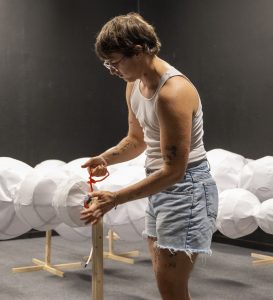
Does working on projects like this change the way you look at your own art?
DP: The process of a working artist’s project actually involved a lot of intuition and hard skills I had learned during my time at VCUarts. It gave me a lot of hope to make bigger and more elaborate projects. I’m working on creating a more imaginative studio practice so I can let my community become more involved with my art process.
LC: I think so. It can’t not. It made me recognize the importance of comradery in my own creations, especially with idea sharing and the excitement of sharing these maybe grand and messy and hard-to-explain ideas and concepts with people that hold that same excitement and willingness to manifest an idea into something tangible – sharing overall as an essential part of creation, and sharing in its many forms and stages, if that makes sense.
What is it like to bring an artist’s vision to life? Was it difficult to replicate what Ferrandi had in mind? Or was there leniency in the final product expectations?
DP: George is an amazing planner. A majority of the project was planned and organized in such a streamlined way. I could tell George had been doing this for a long time and was confident to start because of how clear her process was. However, the plan for the sculptures changed a lot over the course of the summer as ideas failed, succeeded, and evolved. George was transparent about what was integral to her vision and what aspects we could pivot on. Growth and transformation is always so interesting to see, especially for a project so large.
LC: It is pretty magical, especially seeing those lanterns standing tall and vertical at The Anderson, interconnected and illuminated. Ferrandi was very easy to work with. They knew exactly what they wanted this thing to be. She had blueprints for every measurement, every step. It helps that the process of bending wire into circles and gluing special paper into very specific shapes is a very precious and mathematical process. There is not much room for straying from the idea, unless you really want to. There was some leniency in the final product, since it was such a collaborative process with so many different hands and levels of experience, there had to be room for a little grace in the end result. But that gives it such a special, un-planned-for character, with a unique Richmond thumbprint.
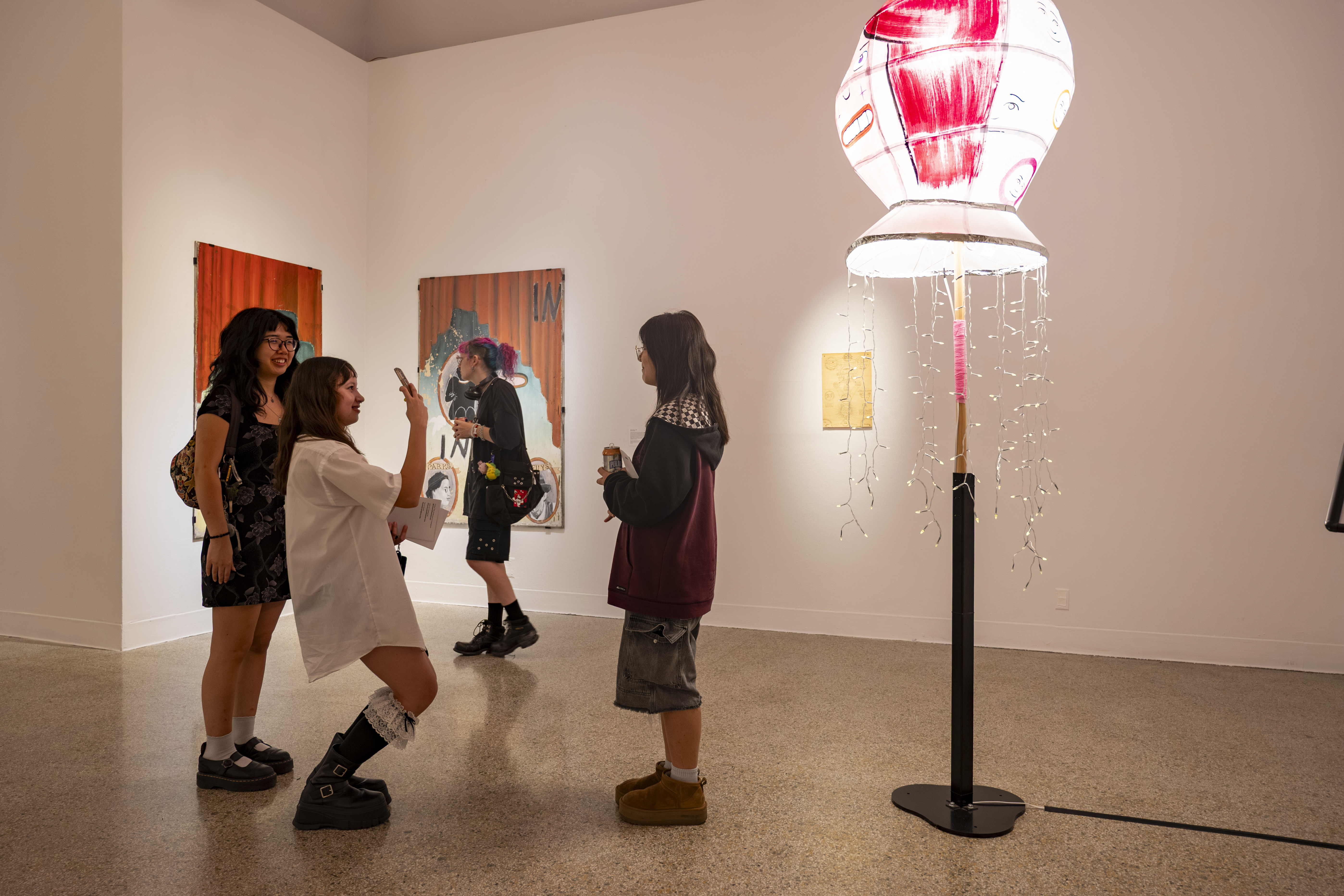
What was it like to collaborate with many different artists to achieve one vision?
DP: Collaboration has always been a bit hard for me since I value control. Individual standards, visions, and work ethics can butt heads. It definitely helped that our work environment had a lot of open communication and humility. Mistakes happen. People get confused. Despite it all, everyone brings so much value and individuality to the project which made it something none of us could do by ourselves.
LC: Some re-gluing and re-wiring was required as there were many different people working at different times so sometimes messages got crossed. Aside from the technical portions, I believe we all came together with the same values of wanting to build community and connection, and how to go about it, so it was very easy to work together in that regard.
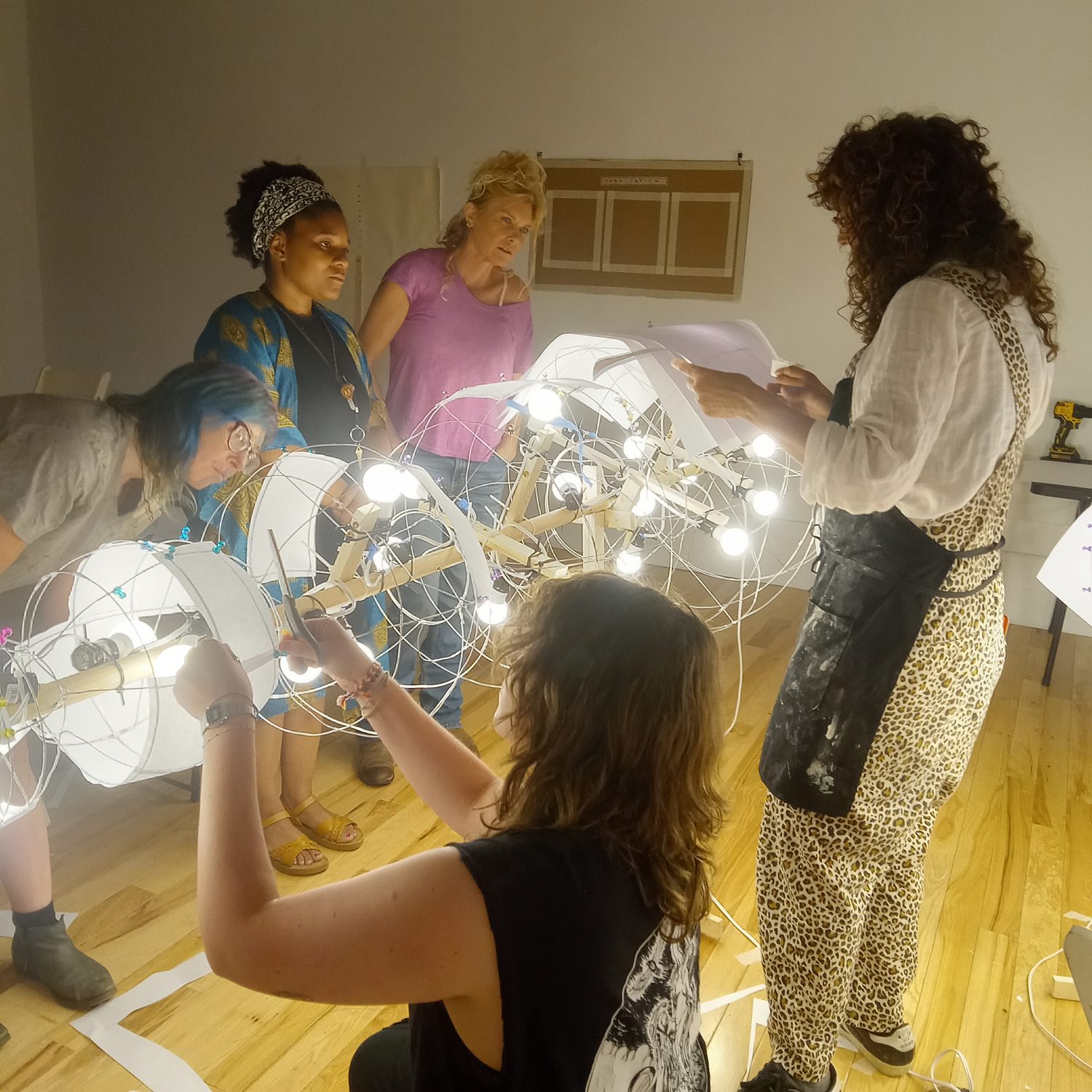
What was your favorite aspect of collaborating on these works?
DP: The most exciting part were the constellates where experts came in to discuss the future of love in their field as we worked. “Dreamstorming” with community members about how to make the world a more loving place was a beautiful and novel experience for me.
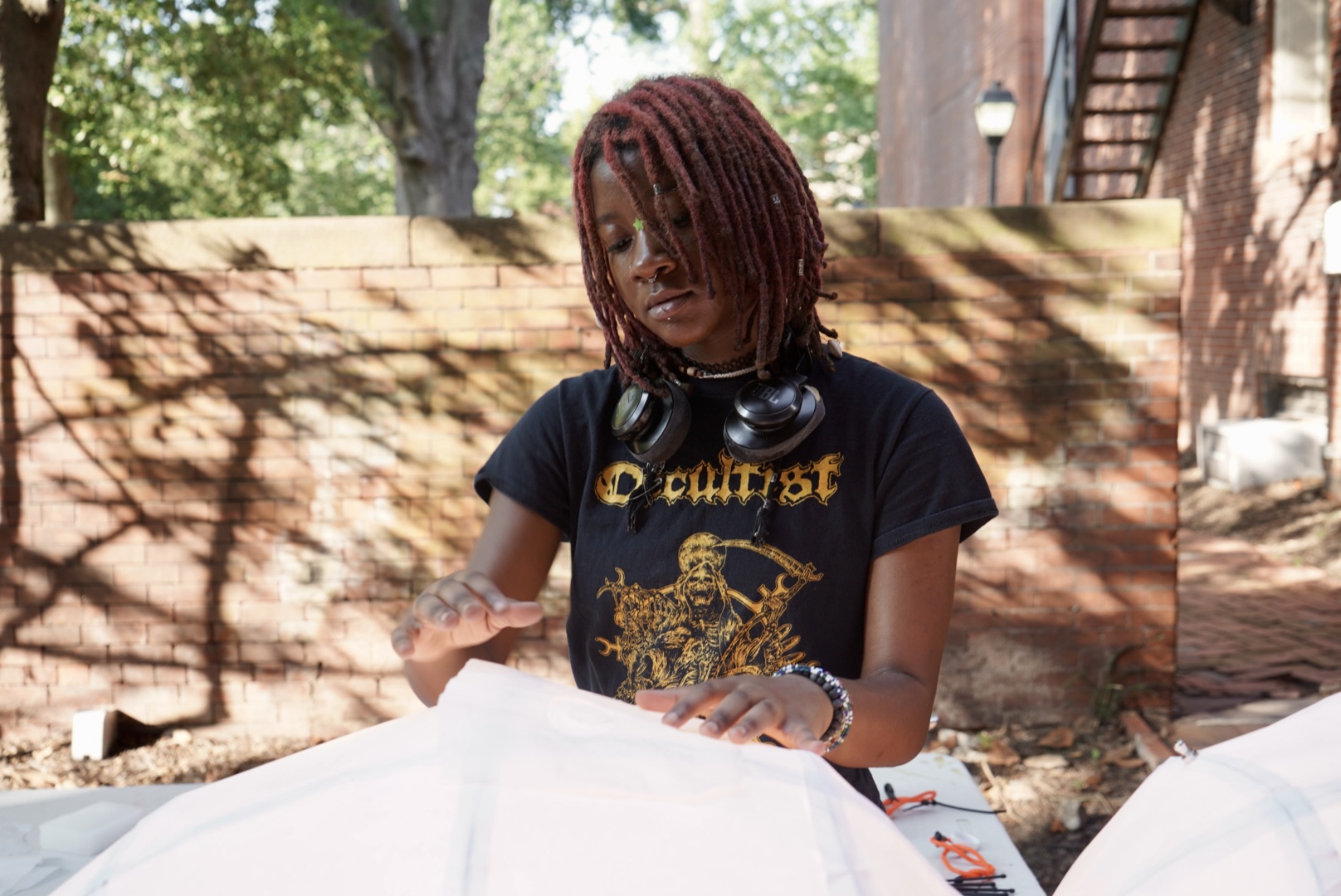
LC: Definitely the labor of love was an aspect I enjoyed. Some days it was very hard to get through gluing these very tiny pieces together. It’d be like putting together a puzzle where the pieces aren’t actually cut perfectly so you have to do your own trimming to fit things together, but do that for like 6 to 8 hours. But the best part of those long labors was that so many great, vulnerable conversations came out of those sessions. There’s a certain point of a shift at work where the small talk fades away and the more fruitful discussions start to unravel. I got to know not only George, but I got to know my friends more deeply, as well as community members I had never met before this. So these works are embedded with deep truths and heartfelt conversations, just adding another layer of meaning.
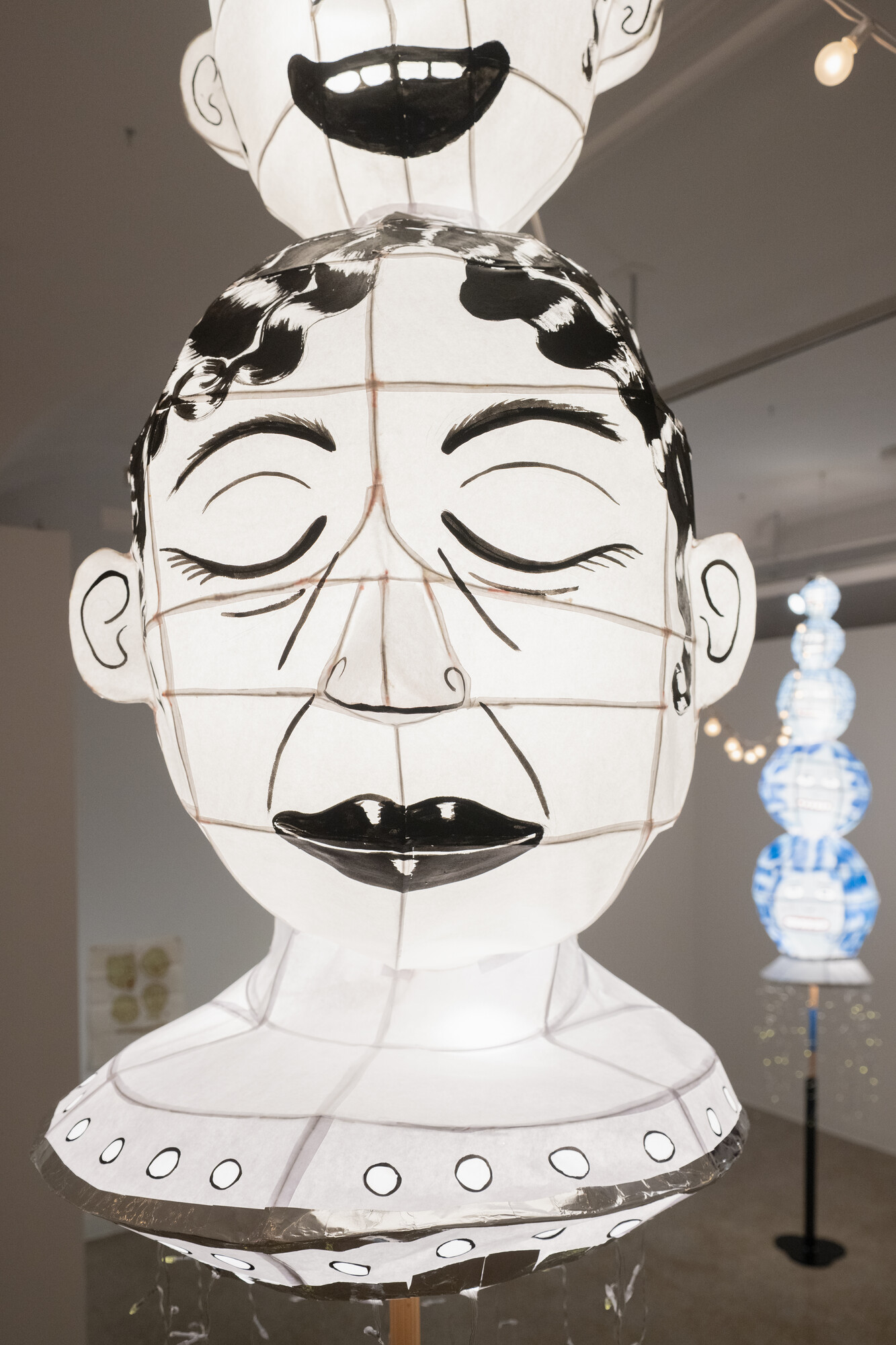
Collaborative assistance on Iota Cephei by: Leo Connors, Divine Porter, Angie Snow, Hank Foreman, Gabbie Bradburn, Rowan Leary, Jonquil Moore, Aidan Phalan, Nyka Belotti, and Rose Troisi